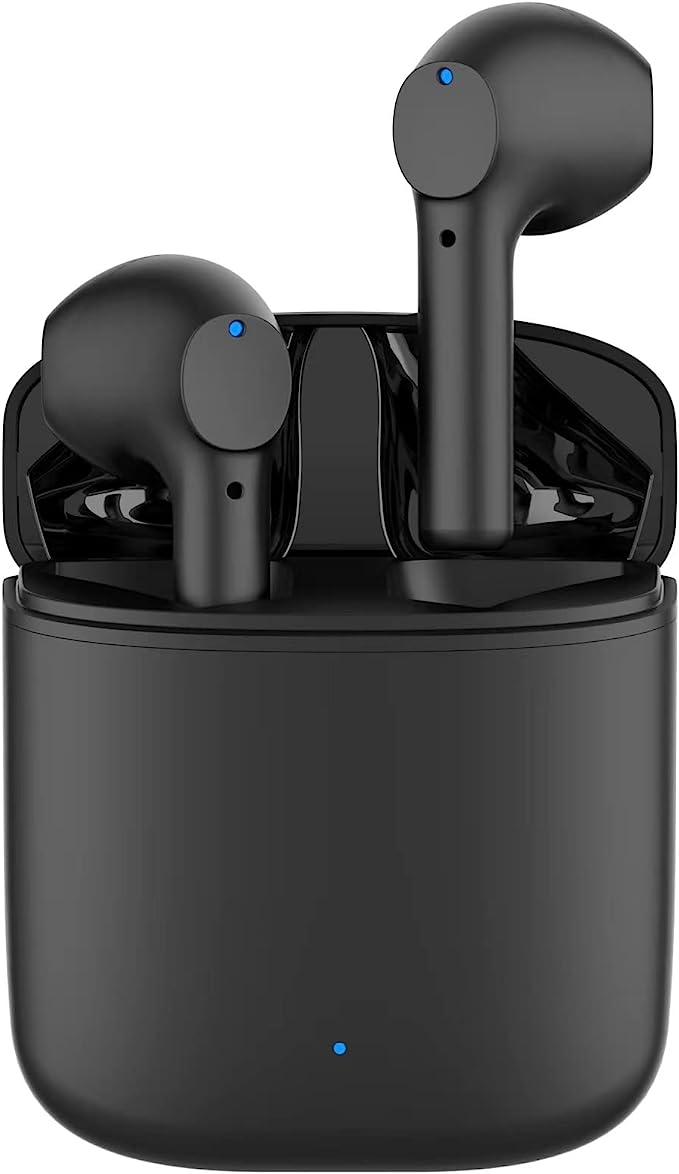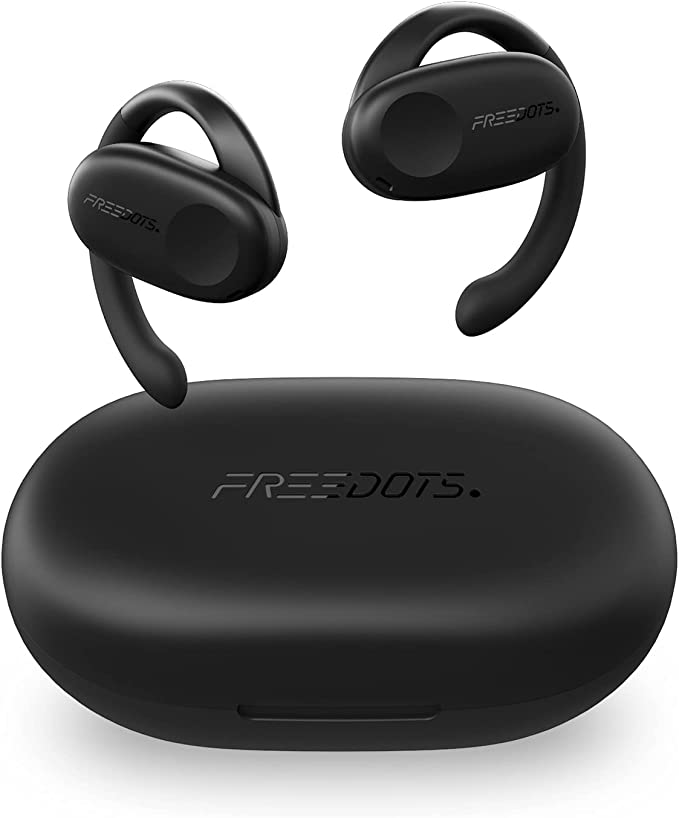KENKUO K68 Wireless Gaming Earbuds: Immerse Yourself with ANC & Low Latency
Update on Sept. 22, 2025, 4:30 p.m.
You’re on a train, the rhythmic clatter of the tracks a monotonous, brain-numbing drone. Or perhaps you’re in an open-plan office, trying to focus against a tidal wave of keyboard clicks and distant conversations. In these moments, we crave a switch—a way to dim the world’s volume, to carve out a pocket of personal space in an increasingly noisy world.
This desire is no longer science fiction. It’s a reality enabled by tiny, sophisticated devices we place in our ears. But the quiet they provide isn’t magic. It’s a masterful application of physics and algorithmic ingenuity. To understand this modern marvel, we don’t need to look at a thousand-dollar flagship. Instead, let’s deconstruct a humble, $40 pair of gaming earbuds—the KENKUO K68—not as a product to buy, but as a perfect specimen of the incredible science that has become accessible to everyone.

Creating Quiet from Chaos: The Art of Cancellation
The most coveted feature in modern audio is Active Noise Cancellation (ANC). The concept famously struck Dr. Amar Bose during a noisy flight in 1978. He realized that simply blocking sound with padding (passive noise cancellation) wasn’t enough. To truly defeat the invasive hum of the jet engines, you had to fight fire with fire—or rather, sound with sound.
At its heart, sound is a wave, with peaks and troughs. ANC technology uses a tiny microphone on the outside of the earbud to listen to the constant, low-frequency ambient noise around you. An internal chip, a Digital Signal Processor (DSP), instantly analyzes this incoming sound wave and generates a brand new one. This new wave is an exact mirror image of the noise—an “anti-noise” wave. It has the same amplitude but an inverted phase, meaning its peaks align perfectly with the noise wave’s troughs, and vice versa.
When these two waves meet in your ear canal, they perform an elegant act of mutual annihilation known as destructive interference. The result isn’t just less noise; it’s a perceived silence that can feel profound. The K68, like countless other devices, employs this principle to make a train commute bearable.
However, this physical trick has its limits. ANC is a master at defeating predictable, droning sounds. But it’s clumsy against sudden, sharp noises like a dog’s bark or a nearby conversation. Its microphones and processor simply can’t react fast enough to create a perfect anti-noise wave for這些 unpredictable, high-frequency sounds. That is the physics of the trade-off.

My Voice, Not the Cafe: The Algorithm of Clarity
While ANC curates what you hear, a different technology curates what others hear from you. This is Environmental Noise Cancelling (ENC), and it addresses a universally frustrating problem: trying to have a clear phone call on a windy street.
It’s a common point of confusion, but the distinction is simple: ANC is for your ears; ENC is for your microphone.
Devices like the K68 use a dual-microphone system to achieve this. One microphone is aimed to capture the sound coming from your mouth. The other is positioned to capture the surrounding environmental noise. This is where the algorithm becomes the star. The processor analyzes the sound from both microphones, identifies the pattern of the background noise—the traffic, the chatter, the wind—and digitally subtracts it from the signal that’s carrying your voice.
Think of it as a smart sound engineer inside your earbuds. It’s using a technique called beamforming, creating a virtual “spotlight” that focuses only on your voice while dimming the sounds around it. The result is that the person on the other end of the line hears you, not the cafe you’re sitting in.

The Race Against Perception: Decoding Latency
For gamers, there is an enemy more frustrating than any final boss: latency. This is the delay between when an action happens on screen and when you hear the corresponding sound. When audio lags behind video, the immersive experience is shattered. In a competitive setting, hearing footsteps a fraction of a second after an opponent has already appeared can be the difference between winning and losing.
The human brain is remarkably sensitive to this. We can typically perceive an audio-visual delay once it exceeds about 80 to 100 milliseconds. Standard Bluetooth earbuds can often have a latency of 150-200ms, which is noticeably out of sync.
This is why the K68 boasts a “60ms Low Latency Gaming Mode.” This isn’t just a marketing number; it’s a figure that sits comfortably below the threshold of human perception. It achieves this by likely switching to a more efficient Bluetooth audio codec—a compression algorithm that prioritizes speed over high-fidelity data. It’s a deliberate trade-off: sacrificing a tiny bit of audio complexity for a near-instantaneous connection that keeps you in sync with the game.

The Engineer’s Compromise: A Note on Reality
All this technology is held together by a wireless backbone, in this case, Bluetooth 5.1, which provides a stable and power-efficient connection. But looking closely at a real-world product also reveals the compromises inherent in engineering.
A fascinating detail on the K68’s product page is a contradiction in its water-resistance rating. The title claims IPX6, while the detailed description lists IPX4. This isn’t just a typo; it’s a significant difference. An IPX4 rating means the device is protected from splashing water from any direction—perfectly fine for a sweaty workout. An IPX6 rating, however, means it can withstand powerful water jets. This small discrepancy is a valuable lesson for any consumer: always read the fine print.
Furthermore, the product’s mixed user rating of 2.8 stars, anchored by a review from a user named Hope who loved them passionately for seven months until one earbud failed, tells a larger story. It speaks to the fundamental challenge of consumer electronics: packing incredibly complex, miniaturized technology into an affordable package that can also withstand the rigors of daily use. It’s the constant, difficult balance between performance, cost, and durability.

Your Curated Auditory World
In the end, by deconstructing a simple pair of earbuds, we uncover a world of elegant science. We see the wave physics of destructive interference, the smart algorithms of signal processing, the neurological race against perception, and the pragmatic trade-offs of real-world engineering.
The true marvel isn’t the KENKUO K68 itself, or any single gadget. It’s the realization that these powerful principles are no longer confined to research labs or aviation cockpits. They are in our pockets and in our ears, giving us an unprecedented level of control over one of our most fundamental senses. We are increasingly becoming the conductors of our own auditory reality, and understanding the science behind the baton is the first step to truly appreciating the symphony.



























































